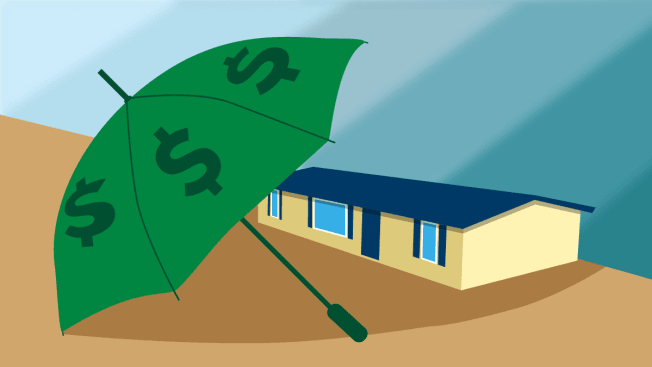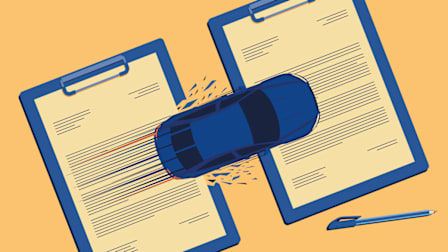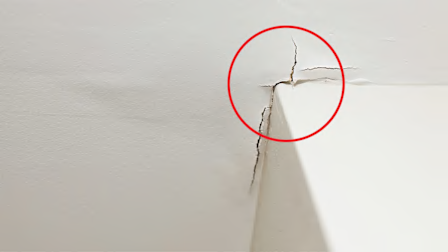How to Save on Insurance for a Manufactured Home
It can cost twice as much to insure a manufactured home as a traditional one. Here’s how to get a lower premium.

Last year when my friend Tami Crandall from Spearfish, S.D., renewed her home insurance on her 2,400-square-foot, 1913 two-story farmhouse with a detached garage, the price tag was about what she expected: $1,800 for the year. But Tami’s daughter and son-in-law, who live just a hundred feet away in a 1,500-square-foot manufactured home—a factory-built structure that rests on a permanent metal chassis as its foundation—had to pay more than twice that amount, almost $4,000, for similar coverage.
Manufactured homes, built in just a few facilities around the country and then shipped to a manufactured home park or land you own, are increasingly common. More than 22 million people in the U.S.—1 in 15—live in one, according to the Manufactured Housing Institute. In fact, since 2014, the number of new manufactured home shipments to homeowners nearly doubled. (Note that “mobile homes” are similar to manufactured homes but were built before 1976, when new building standards were introduced. Both are different from “modular homes,” which are more like traditional homes but built in a factory and shipped to your property to be placed on a foundation.)
Why Owners of Manufactured Homes Might Pay More for Insurance
The Manufactured Housing Institute, a trade organization for the industry, says many manufactured homes today are located in resort-like communities with features like pools and tennis courts, and that the homes are as safe as traditional-built homes. For example, MHI points to a 2013 National Fire Protection Association report showing that manufactured homes experience up to 44 percent fewer fires than traditional “site-built” homes. In addition, the federal codes, to which manufactured homes must be built, require fire retardant materials and at least two exterior doors for an emergency exit.
Plus, MHI says manufactured homes perform as well as traditional, or “site-built,” ones during a storm—although the group acknowledges they are more commonly located in areas such as the Midwest or South where tornadoes and other severe storms can occur. They also point out that proper installation and anchoring of a manufactured home can keep it safe in severe weather.
“There are some differences between the construction materials of a manufactured home and a traditional home,” acknowledges Dave Anderson, executive director of the National Manufactured Homeowners Association.
Another difference: Some manufactured homes may be located in areas with higher risks for theft and vandalism. “But do those differences mean insurance costs would be a little higher? Maybe. But nearly twice as much? I don’t think so,” Anderson says.
One problem for manufactured home insurance buyers could be lack of competition among companies, says Joseph Sullivan, executive director of the Manufactured Home Owners Association of New Jersey, who also sits on a manufactured home advisory committee at the U.S. Department of Housing and Urban Development.
While there are more than a dozen national companies that sell homeowners insurance policies (think Allstate, Farmers, Liberty Mutual, State Farm, USAA, for example), Sullivan points out that there are only a handful of companies that insure manufactured homes, including Allstate, American Modern, Assurant, and Farmers/Foremost. Less competition, Sullivan says, can mean higher rates for the consumer.
“If you go to, say, Geico, you’re going to get a policy through one of these companies,” Sullivan says. Indeed, Geico partners with Assurant, American Modern, and Foremost, among others.
Case in point: Tami Crandall, in S.D., had dozens of companies to choose from for her homeowners insurance; her daughter and son-in-law had only three.
Commonsense Suggestions
To start with, yes, you should insure your manufactured home, even though most states don’t require it, says Anderson. For one thing, your bank or manufactured-home community will probably require it. For another, it’s a smart move to protect what is likely your most important asset from unforeseen circumstances. Home insurance also covers your liability if someone else has an accident on your property or in your home, Anderson points out.
When it’s time to shop around for a policy, consider working with a local independent agent, which can be more efficient than looking for yourself online. Not sure whether an agent is truly independent, or is actually a broker for just one or two companies? Just ask, Crandall says.
No matter which company you get your insurance from, here are a few tried-and-true suggestions to help you get the best deal.
Have the highest possible credit score. For nearly any kind of insurance, including manufactured home insurance, having the best possible score you can will help, says Chuck Bell, CR policy analyst who works on credit scores and insurance issues. Although CR advocates think it is unfair and potentially discriminatory to use credit history to set premium rates, for now your best course of action is to review your credit report for free at AnnualCreditReport.com, correct any errors you find with the credit bureaus, and deal with any debt collection notices on your report—both of which could easily raise your score once resolved.
Ask about bundling. It’s always worth asking for quotes from insurance companies where you already have a policy, and finding out whether there’s a discount for getting, say, your car and home insurance policies from the same company. You could save 10 to 15 percent, Crandall says. One example: American Family says bundling home and auto policies could save you up to 23 percent.
Consider a higher deductible. Increasing your deductible—the amount you’ll first pay out of pocket before your insurance—from $500 to $1,000 or even $1,500 could save several hundred dollars off your premium.
Pay the premium in full. Doing so could save between 5 and 15 percent, Crandall says. Also, ask whether using an electronic funds transfer could net you additional savings. Paying via EFT might save you around 3 percent of your monthly or annual premium.




















